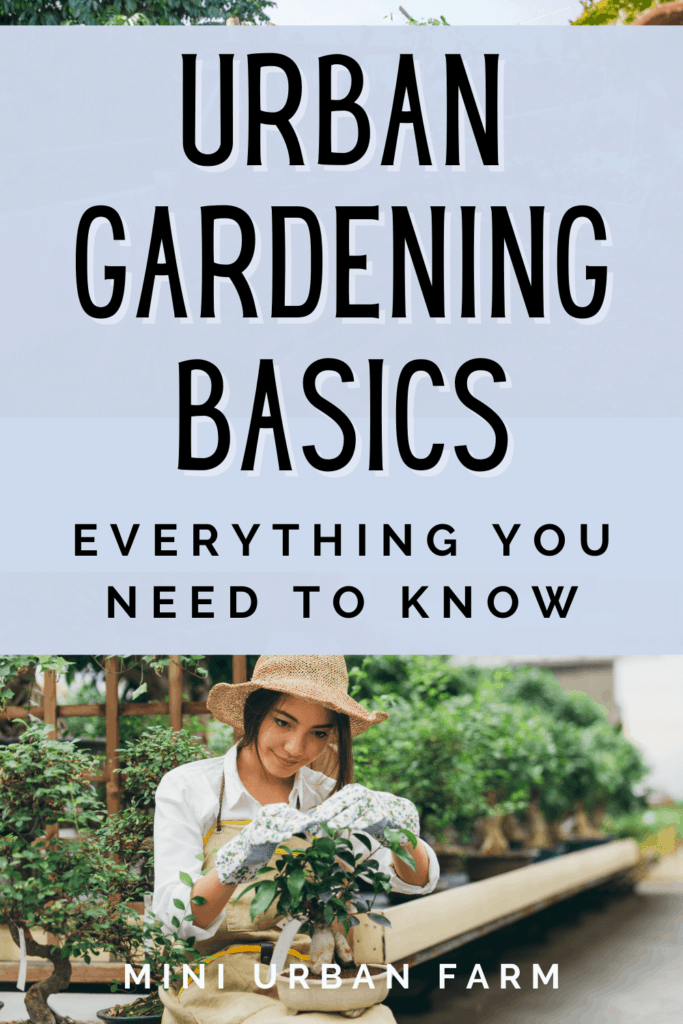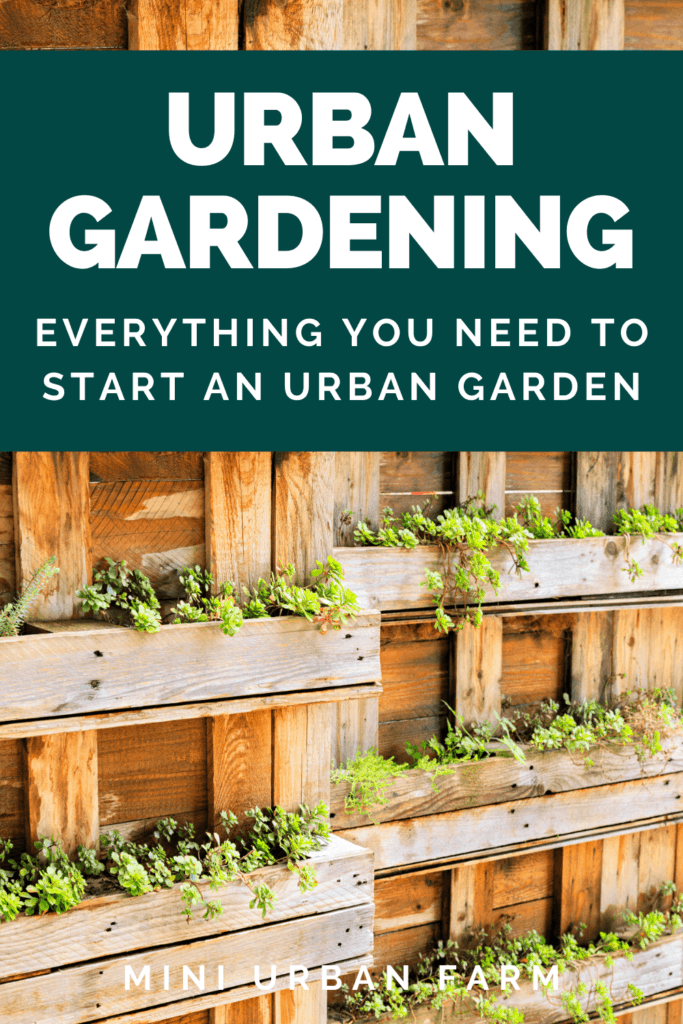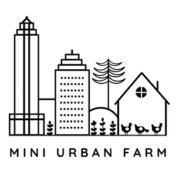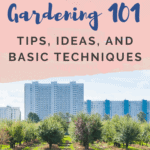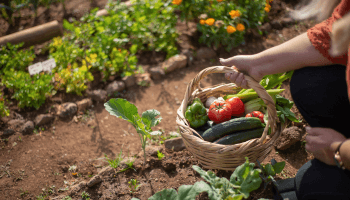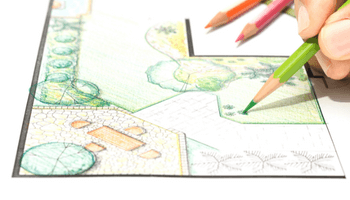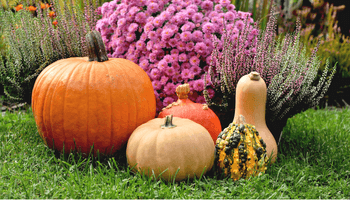If you live in the suburbs, you might think you don’t have enough space or the right conditions for a garden. But, I’m here to tell you that that’s not true at all! You can start a garden with little space, in a non traditional gardening space, and still produce tons of food! So in today’s post, let’s get into the details of urban gardening for beginners!
Urban Gardening For Beginners:
- What is Urban Gardening?
- Urban Gardening Ideas
- Tips for Creating an Urban Garden
- Small Space Gardening Techniques
- Urban Gardening Goals
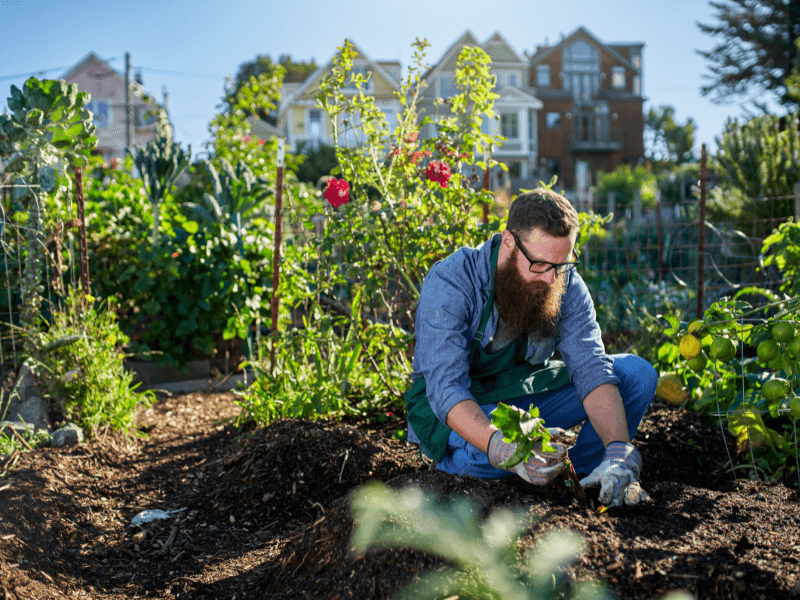
Disclosure: This post may contain affiliate links. If you purchase a product through one of our affiliate links we make a small commission from the sale at no extra cost to our readers.
Urban Gardening for Beginners
When people talk about having a garden, most people would imagine a nice open area with tons of space, tall plants everywhere, and maybe even a greenhouse.
But let me tell you – you really can garden anywhere! I’ve seen tons of non-traditional gardens where lots of food is being produced, and there are no open rolling fields in sight!
So if you’re new to gardening and you don’t have tons of space, don’t worry! I live in the suburbs and produce all the vegetables my family needs with only 1/4th of our small backyard!
So trust me – if you keep an open mind, you’ll be well on your way to starting your own urban garden!
And if you’re looking for a complete step by step guide to starting your garden, check out my Starting Your Urban Vegetable Garden workbook!
What Is Urban Gardening?
Urban gardening means to set up and maintain a garden in an urban or suburban space. This could be a backyard, side yard, rooftop, community garden, or any other space where you wouldn’t normally see a food-producing garden.
Normally when people refer to urban gardening they’re talking about food production in limited spaces. Not necessarily the landscaping in front of houses – although you could definitely use a front lawn to produce food!
There are several challenges to deal with in these types of gardens. Including the limited space, abundance of rules and regulations, and possible lack of sunlight.
So naturally, urban gardeners are forced to get very creative in order to have a high production space!
Some of these techniques to maximize space include growing vertically, using dual purpose plants, and container gardening. But more on those below!
Urban Gardening Ideas
When it comes to gardening in a small space, the possibilities are endless!
Here are some ideas that you can take to get your own urban garden started, or even add to your existing space!
– Turn all or some of your backyard into an edible garden space
This is probably the most basic idea on the list, but one that can also include so many other techniques!
In my current backyard, we divided the space up into fours. And after much negotiation with Mr.MiniUrbanFarm, we decided to use 1/4th of our available space for gardening. Which ended up being about 450 square feet total.
And although that doesn’t seem like a lot, that space is home to 9 raised garden beds, countless pots of herbs, and even a compost bin!
In that small garden we produce all of the vegetables that we need for a family of 4, and even have enough to preserve for later!
And you could definitely extend this idea into your side yard, front yard, or any other available space around your home!
– Line your driveway with edible plants
Usually on the side of a driveway you’ll see pavers, bushes, or even just grass.
So why not create an edible row on each side of the driveway?
You could plant any type of herb or vegetable that doesn’t need a trellis – but I think herbs would probably be best!
Things like basil and rosemary make excellent landscaping and your neighbors would be none the wiser! Plus you won’t need irrigation since herbs are pretty drought tolerant!
Psst…want to fast track your garden? Get access to my FREE gardening resource library and start maximizing your garden today!
– Replace a tree with a tree guild
By using permaculture principles you can build a tree guild in place of a non-food producing tree! Or you could even use one of those trees and plant right under it!
Basically a tree guild is a mini ecosystem on its own where different plants of varying heights are planted together to all benefit eachother.
Tree guilds usually consist of a canopy and sub-canopy, bush and shrub layers, and then ground cover and root crops. Plus you could add in a vining layer to climb up the tree – although if you live in an HOA community they might complain about that last part!
A tree guild is a great way to produce a bunch of food in a small space with minimal effort!
– Create a rooftop garden
If you live in a building with rooftop access, you can take advantage of the abundance of sunlight by setting up a garden.
Rooftop gardens are perfect spaces to produce a lot of food, set up some twinkly lights, and even make a place to hang out!
Plus, rooftops of apartment or residential buildings are usually overlooked and as a result, go as wasted space. So what better way to make use of the space than starting a garden!
– Find a community garden
Lots of communities lately are starting community gardens. And if you’re not familiar, a community garden is a piece of land where you can rent out small plots to set up a garden of your own!
Usually you pay a monthly fee and you are responsible for tending to your area.
You’ll be responsible for ground preparation, seed starting and sowing, harvesting, and end of season clean up. It’s basically like renting out the space for your garden, but in a community!
And while this type of garden might not be right in your backyard, you’ll be able to connect with other gardeners, get new ideas, and even learn from each other!
Tips For Starting an Urban Garden
Getting your urban garden set up doesn’t have to be complicated. But there are definitely some things you need to know about urban gardening for beginners!
And don’t forget to check out these urban gardening tips for more in depth gardening techniques!
Grow vertically to maximize space – using trellises to grow plants vertically will allow you to maximize space and even has added benefits like keeping your plants healthier!
Use dual purpose plants – plants that look like landscaping will blend in much better and leave your neighbors clueless! For example, you can plant an entire herb garden in your front yard and it’s likely no one will even notice!
Know the rules and regulations – in an urban or suburban area, you always need to know that rules and regulations there are before you start setting up your garden! The last thing you want to do is rip up your perfect garden space because it doesn’t abide by the rules!
Plan out your space carefully – make sure to plan out your garden space before you start digging! By designing it on paper first, you’ll be able to see where you can maximize space and even add extra features! Plus, you can get some great gardening ideas on the Mini Urban Farm Pinterest!
Small Space Gardening Techniques
A common factor in urban gardening is a lack of space. You might have a backyard or side yard to work with, but you might not want to dedicate all of that space to a garden.
And you probably don’t have tons of acres for gardening in the suburbs.
So by using these small space gardening techniques you’ll be able to maximize your impact and grow as much food as possible!
Vertical Gardening
I know I already mentioned vertical gardening above, but it’s definitely worth repeating! By adding trellises to almost all of my raised beds, I was able to more than double my gardening space and produce tons more food! Now I garden up the trellises, which leaves the entire inside of the raised beds to plant more food!
Square Foot Gardening
I absolutely love square food gardening because it allows you to calculate exactly how many plants can go in any space! You know exactly how much space you need to plant what you want, or how much you can plant in the space you already have! Plus, it takes the guesswork out of plant spacing – and overcrowding plants is a real issue!
Dense Planting
There are certain things you can’t plant super close together, but there are other plants that thrive when crammed into small spaces. By planting densely, you can grow two, three, or even four times the amount that you would have otherwise been able to grow!
Companion Planting
This technique has so many benefits! It helps to keep pests away, keep plants healthier, and maximizes your space! Plus you can companion plant some live mulch to prevent evaporation and use that wasted space!
Container Gardening
You could make an entire garden out of grow bags or pots! Or just incorporate them into an existing garden like I do! I keep certain herbs in pots to prevent them from spreading where I don’t want them (like mint and thyme.) And I keep them in between my raised beds – they’re super easy to move around when I want to get by!
Urban Gardening Goals
Like with any new project, it’s always great to have some goals so you can measure progress.
And while you don’t need to be super detailed with these goals, having a basic understanding of what you hope to get out of your garden will help you (and your garden) be more successful in the long run!
Now, I have an entire post on gardening goals that every gardener needs, but here are some great ones to get you started!
Sample Goal #1: Design and layout garden space by the beginning of next month – this is a great goal to have for yourself when setting up a garden since it give you a deadline to get it done! Plus, when creating steps to get to your goal, you can add in things like “gather garden design ideas on Pinterest,” “measure out dedicated garden space,” and “draw out garden design on graph paper.”
Sample Goal #2: Sow and transplant all plants into garden by XX date – By creating this goal, you’ll be getting yourself into the habit of deciding what you want to plant, researching those plants, learning about companion planting, and figuring out the best ways to start seeds. For me, this is one of my favorite goals since it include the actual gardening and getting your hands dirty parts!
Sample Goal #3: Learn to preserve vegetables by end of next gardening season – Honestly, this is one of my existing goals and one of the best goals you can have if you’re a new gardener! The last thing you want to do is let extra food go to waste, so by learning to preserve your crops you will save yourself tons of money and time!
Psst…want to fast track your garden? Get access to my FREE gardening resource library and start maximizing your garden today!
What plants are best for an urban garden?
As a beginner urban gardener you might be wondering what types of plants are best for a small gardening space.
And there are so many things to consider.
First, only grow what you like. Whether that’s growing food, growing flowers, or growing ornamentals. This might seem pretty obvious, but it often goes overlooked for beginner gardeners.
I’m even guilty of this.
Last season I planted tons of radishes. Now, I love radishes, but no one else in the family does. I ended up giving so many away just because they would have gone to waste!
Next, you have to think about how much space you actually have.
You might want to grow rows of zucchini, but if you only have 10 square feet for your garden, that might not be the best use of space.
Take into consideration the type of garden you want to have, how much space you can allocate to a garden, and how much effort you ultimately want to dedicate to your garden.
That will determine the types of plants you should grow!
Overall, urban gardening for beginners can be a complicated topic. There are so many things to learn and so many challenges along the way! But by using these urban gardening tips and practicing your gardening skills, you’ll have a successful urban garden in no time!
I hope this was super helpful! And for more gardening resources, get access to our free gardening resource library! It will help you fast track your garden and it only takes 5 seconds!
Pin Urban Gardening for Beginners!
